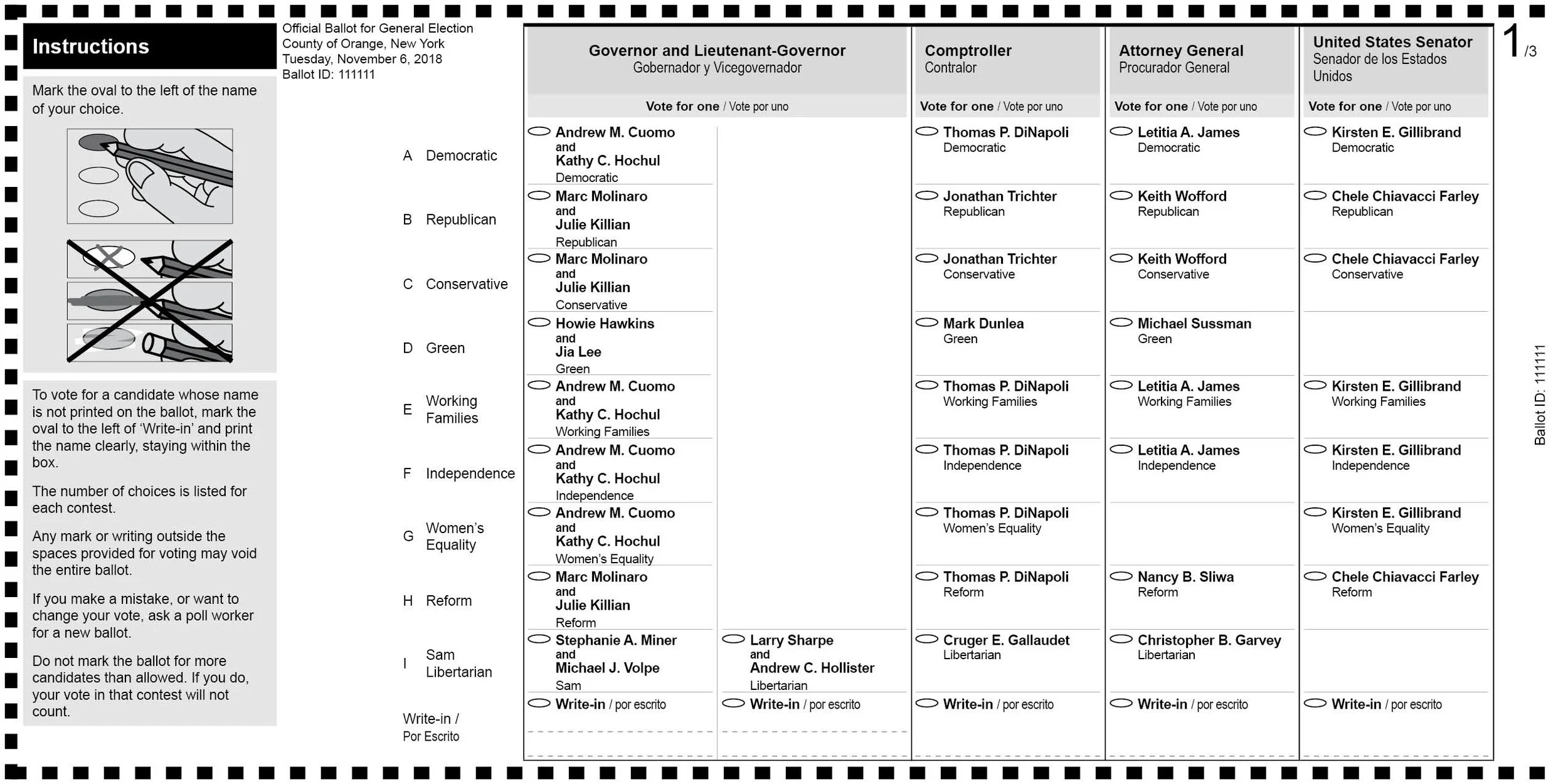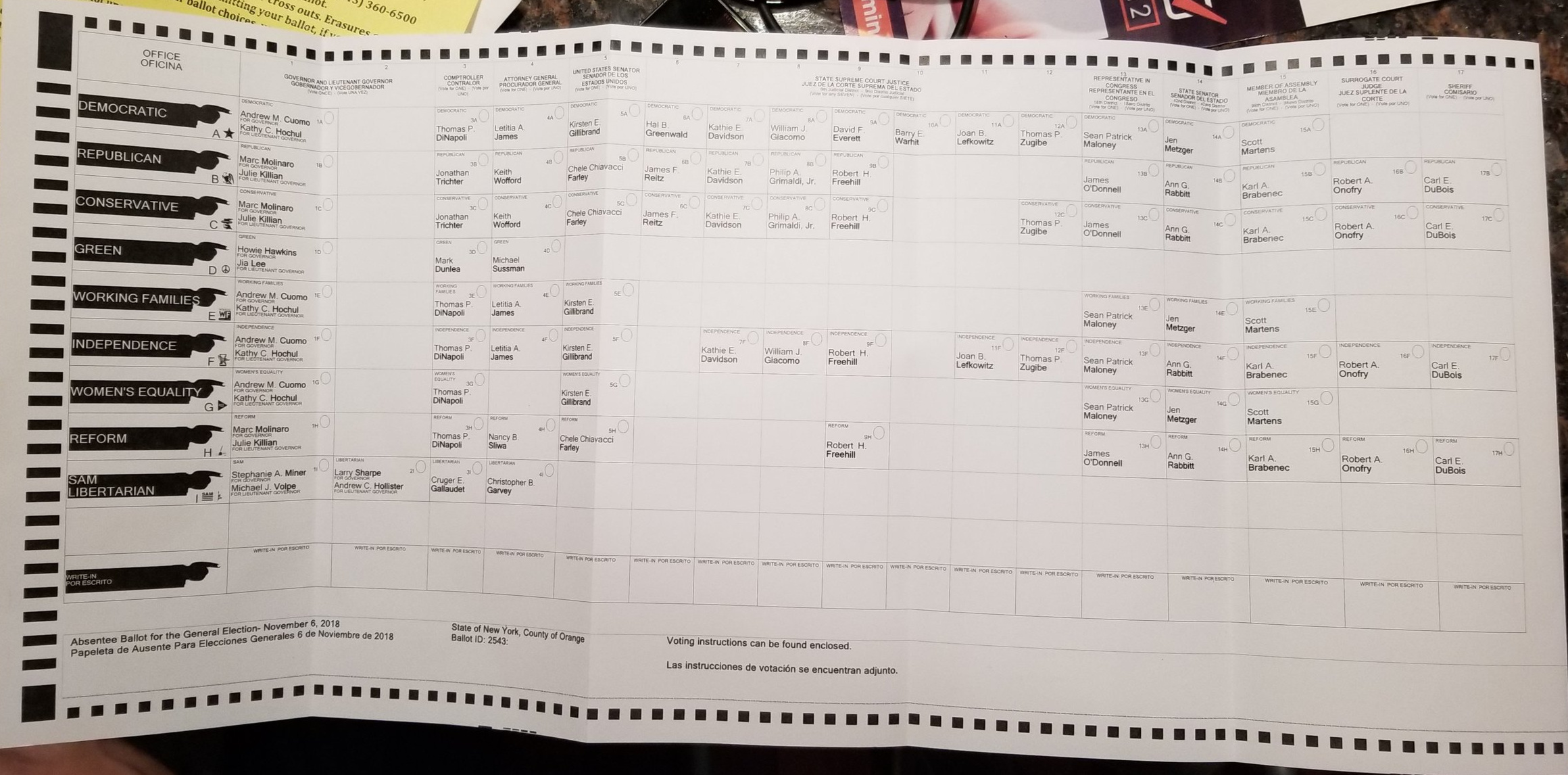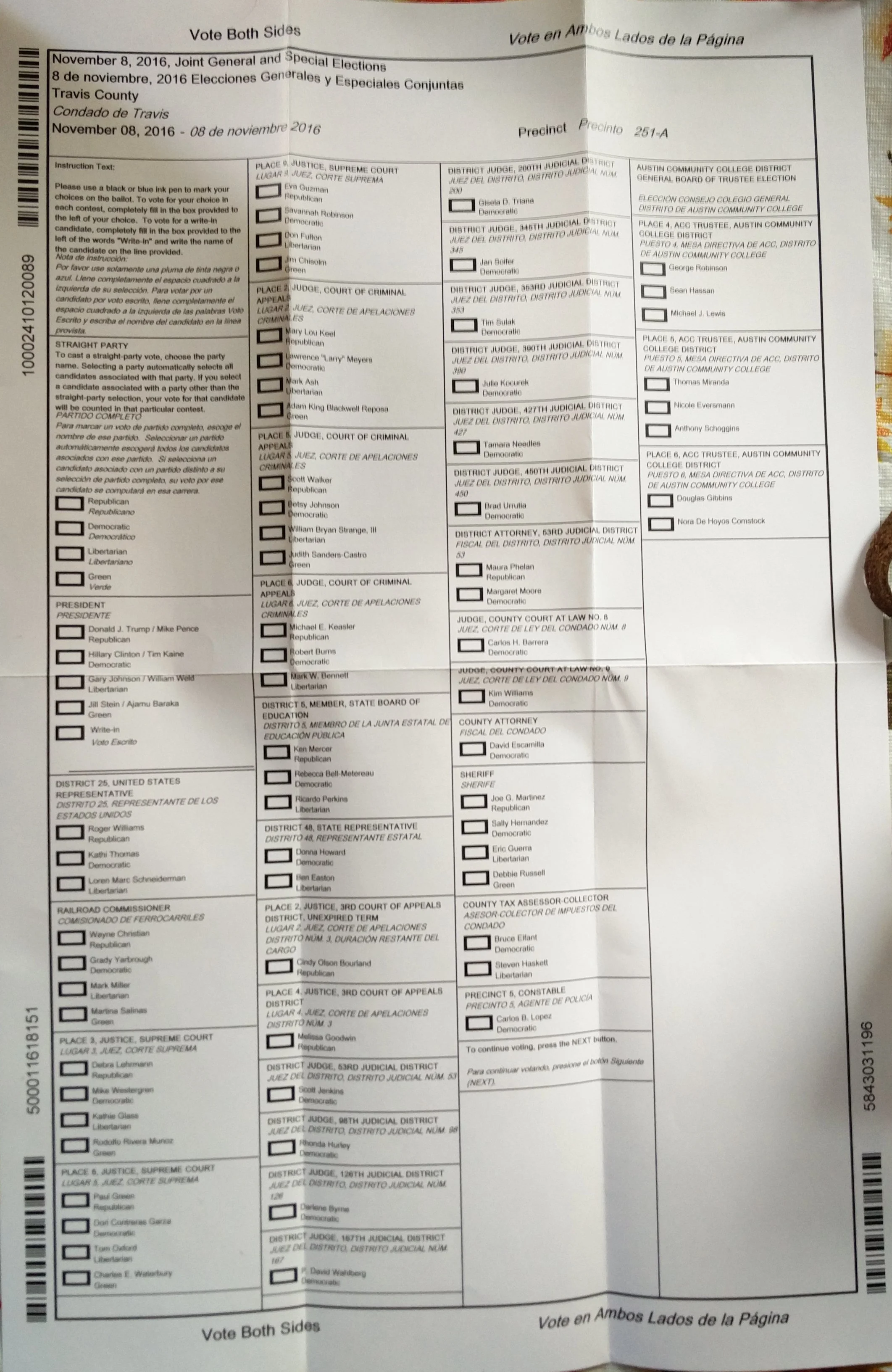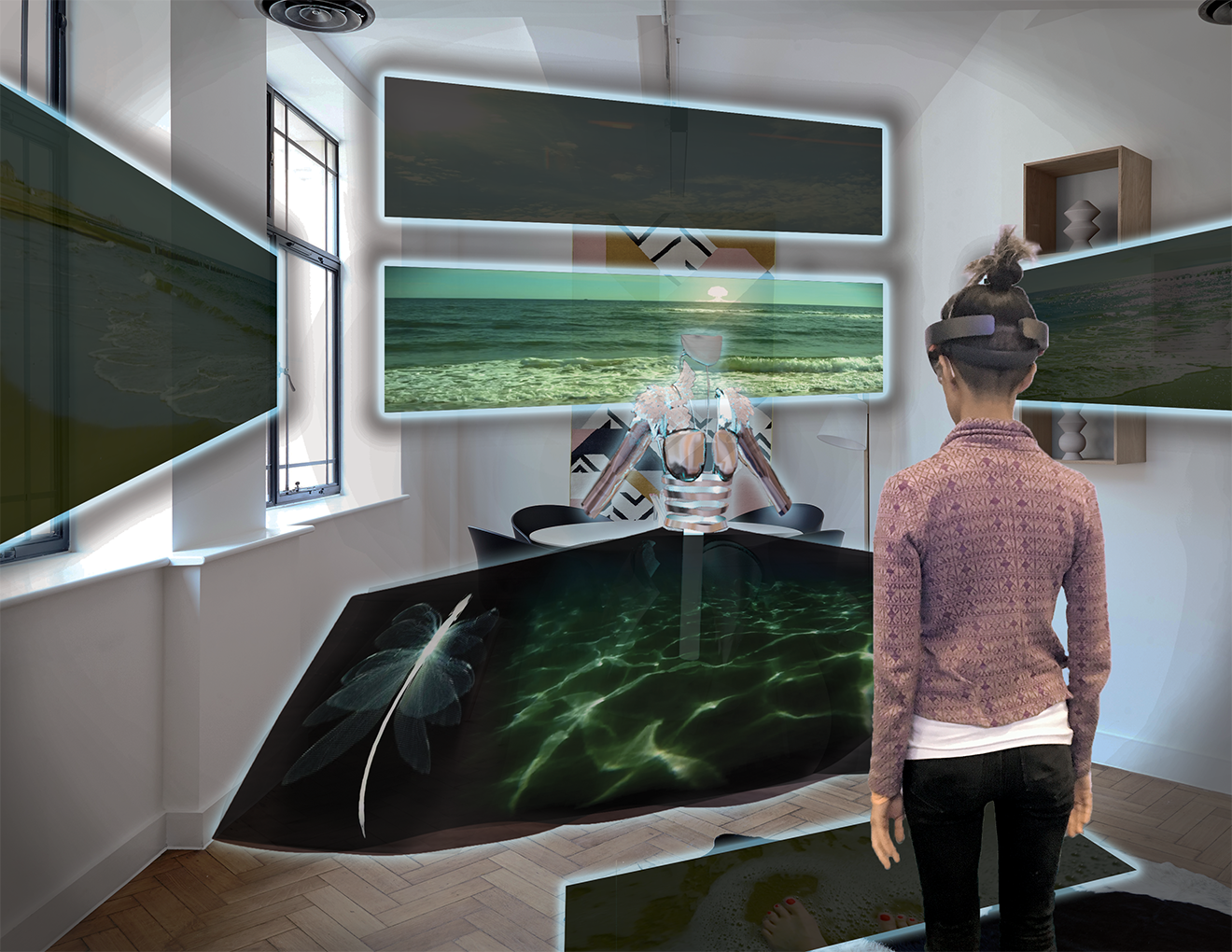New York Ballot
Elections are too important to use ill conceived and poorly designed ballots. The New York State ballot is one of the more difficult to navigate and disenfranchising designs. This project was a pursuit of discovering why the ballot exists in its current condition, what plans are in place or underway to correct these problems, and how future ballots can be improved.
Three ballots were created incorporating a spectrum of legal compliance and best design practices. The design for Version 1 ignores some best design practices in order to minimize the amount that would change from the original ballot. Version 2 is the result of complying with all the New York State laws in addition to following all the best design practices. The last version, Version 3, sacrifices some legal compliance in order to make the best designed ballot possible.
My role: UX Designer, UX Researcher
My tools: Paper & pencil, Adobe InDesign, Adobe Illustrator
**Update - January 23, 2019: Assembly Bill A9607 has been replaced by Assembly Bill 2682A and Senate Bill 2300A as the most up-to-date legislation to fix the ballot. The verbiage concerning the ballot’s design was unchanged, so my ballots do not need changing either.
Update - March 5, 2019: Senate Bill 2300A passes and is now on the the Assembly calendar.
Update - March 11, 2019: Assembly Bill 2682A was substituted for Senate Bill 2300A and passed. Unless the Governor vetoes the bill, it will become law in time for the 2020 presidential election.
Version 1
This design considers the legal requirements more important than design. It most closely resembles the original but sacrifices best design practices to be achieved.
Version 2
This design considers the legal requirements equal to the design. It disregards the original ballot, complies with all NY laws regarding ballot design, and incorporates best design practices.
Version 3
This design considers the legal requirements less important than design. It sacrifices legal compliance to achieve best design practices. It is the greatest deviation from the original ballot design.
Jump To:
aaaaa bbbbb ccccc ddddd
Brainstorming
asdfasdfas
Research
This was an entirely new area of exploration for me. I had voted in the past, but only in Texas, and I never gave much thought to the design of the ballot. It hadn’t really occurred to me that ballots could be designed differently (I was too young to remember the “hanging chad” controversy from the 2000 election). Now that I have been exposed to the variety of voting styles and methods, I have a new passion for the way our democracy works.
My research led me to discover non-profit organizations like Center for Civic Design (CCD), government entities like Election Assistance Commision (EAC), and various state and federal bills like the Voting Reform in New York City and Help America Vote Act of 2002. I read news articles, like this one from The Washington Post, and learned about different voting methods such as Electoral Fusion, which New York is one of eight states that participate in. In the state of New York, Assembly Bill A9607 (**see top of page of an update) enacts the Voter Friendly Ballot Act and has passed the State Assembly and is currently in review by the State Senate, as of January 9, 2019.
Here is a page which includes most of the research links I followed and found important.
Around the time I decided to pursue this project, there was an interview on the NPR show All Things Considered about confusing ballot design. During that segment I learned about the Center for Civic Design (CCD), a non-profit organization dedicated to improving ballots and voter abilities across the country. I reached out to them, and they pointed me to a Medium article with many resources to begin my research.
My research took me in different directions such as to articles from The Washington Post, to presentations on voter research, and to suggestions on ways to improve the current New York State ballot. To accomplish this, one of the obvious questions I needed answering was why this ballot allowed the same candidate to represent more than one party?
New York is one of eight states which allows for Electoral Fusion, which is when a candidate can represent more than one party, and a citizen must be able to vote for a candidate from a particular party. This method of voting allows minority voices to be heard, represented on the ballot, and have a chance to make an impact. In theory, it allows for more nuanced voter opinions to be heard by officials without necessarily overcrowding the field with different, single-minded candidates. For example, a citizen can vote for Andrew Cuomo, who is also representing other groups, through the Women's Rights party because that's what they believe in more than the Independence or Democratic parties. Which is why a ballot cannot group all parties a candidate represents under that candidate’s name.
The CCD’s website has Field Guides for the many different aspects concerning the voting process, one of which is the ballot design itself. I learned about the Help America Vote Act of 2002, which established the federal Election Assistance Commision (EAC) in an attempt to bring the country to more modern voting methods and techniques and provide guidance and standardization to the states on how they conduct their elections. The EAC published a report in 2007 on the Effect Designs for Administration of Federal Elections, with Chapter 3 covering Optical Scan Ballots (aka paper).
I then turned my attention to the specific laws for the State of New York. I read about a report from the Comptroller on Voting Reform in New York City, which covers updates to many aspects of the voting process, including ballot design, and the New York Board of Elections proposal for 2018, which repeals some of the more antiquated laws. This report also mentions enacting the Voter Friendly Ballot Act, which also repeals antiquated laws, updates current laws, and adds new laws to reflect our current technology. Assembly Bill A9607** enacts the Voter Friendly Ballot Act and has passed the State Assembly and is currently in review by the State Senate, as of January 9, 2019.
Here is a page which includes most of the research links I followed and found important.
User Journey
asdfasdf









